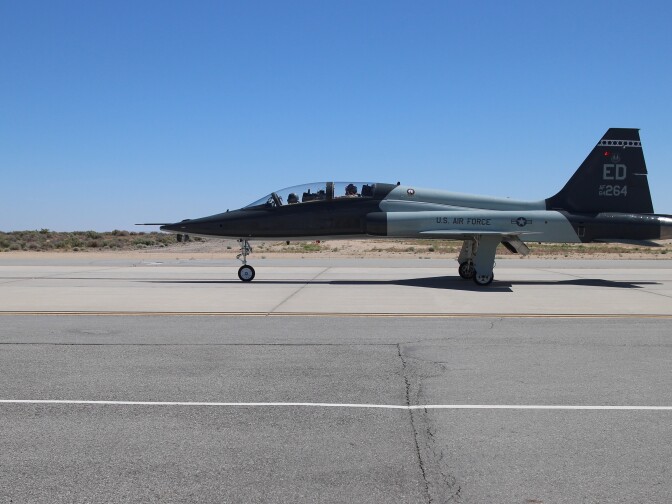With our free press under threat and federal funding for public media gone, your support matters more than ever. Help keep the LAist newsroom strong, become a monthly member or increase your support today.
The school where Air Force pilots get 'comfortable being uncomfortable'
When new, experimental aircraft are developed for the military, the first pilots to enter the cockpit are flying blind.
“The very first person to fly the F-35, they were the first person," said Colonel Charles Webb. "There was nobody to ask, 'How well does it land?' You have to have the skill set that you can bring to a brand new platform."
Drive 90 miles north of Los Angeles, way out in the Mojave Desert, and you'll find the home of the pilots and engineers who are developing the skills to carry out test missions: the U.S. Air Force Test Pilot School.
The work of test pilots is vital to working out the kinks of new aircraft, systems and weapons and making sure it's safe in the real world.
"Our sacred duty in my opinion is to go there before the warfighter," said Webb, commanding officer of the school on Edwards Air Force Base, "so we don’t have a young wingman over hostile territory that finds something we should have found in test."
There's a saying in the test flight community: "Call the baby ugly." If there's an issue with a new piece of machinery or if software isn't running right, you've got to be able to bring it up. This school prepares students to do that as flight test pilots and engineers.
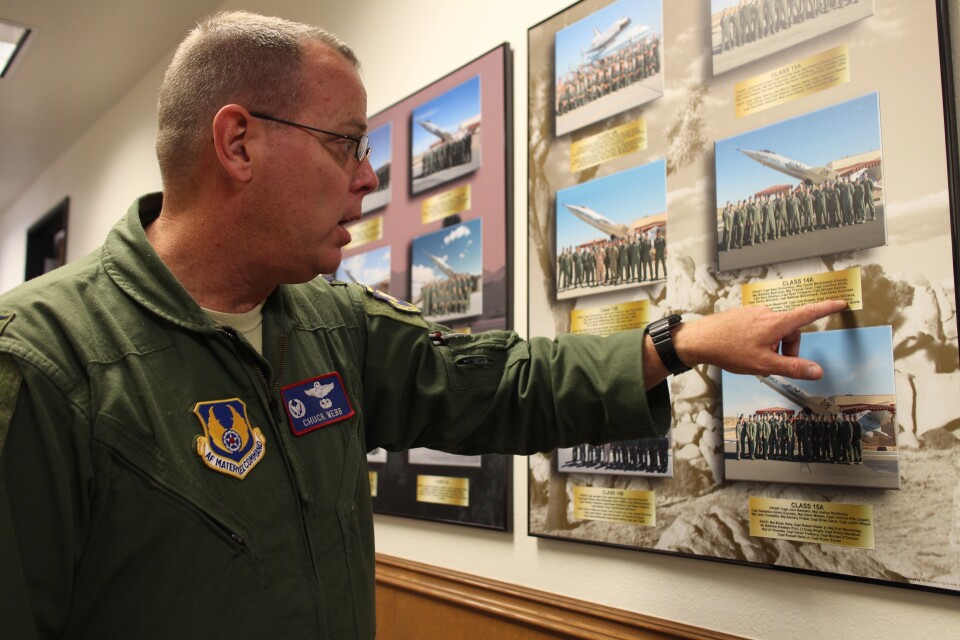
The U.S. Air Force Test Pilot School is a very competitive, with only 20 students accepted into each class. Half are pilots and half are engineers, who monitor systems from the backseat of the plane or in a control room on the ground. The tuition – valued at $1 million – is covered by taxpayers.
During the 48-week course, students learn to push the limits of aircraft. How high can a plane climb? How fast can it go? How much can it carry?
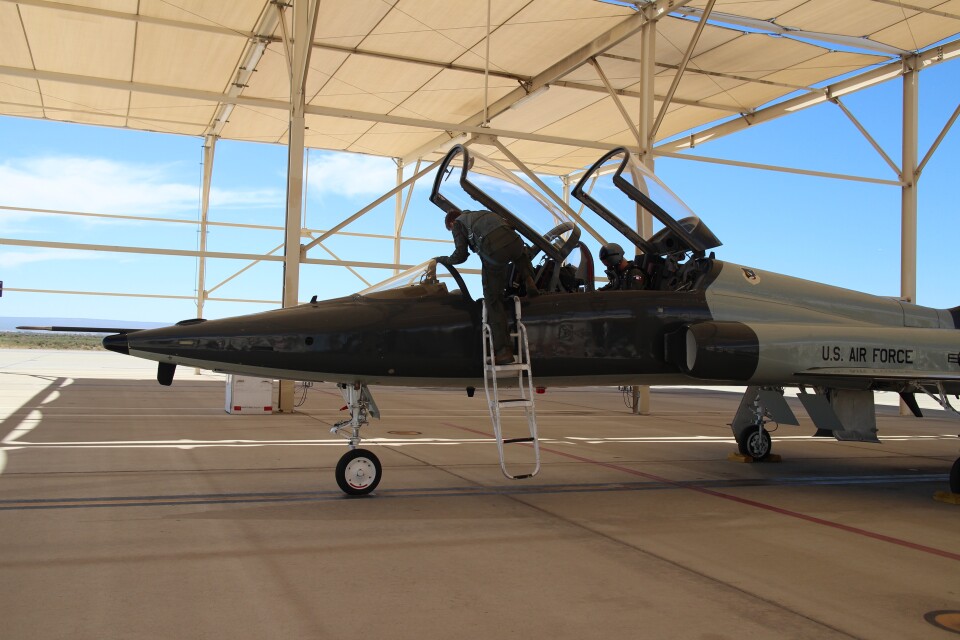
They spend half of an average day practicing flight maneuvers and testing capabilities, and the other half of the time in intensive math and engineering classes.
After graduation, many students will move across the street at Edward Air Force Base to work at the Air Force Flight Test Center – running test missions for systems the military is rolling out.
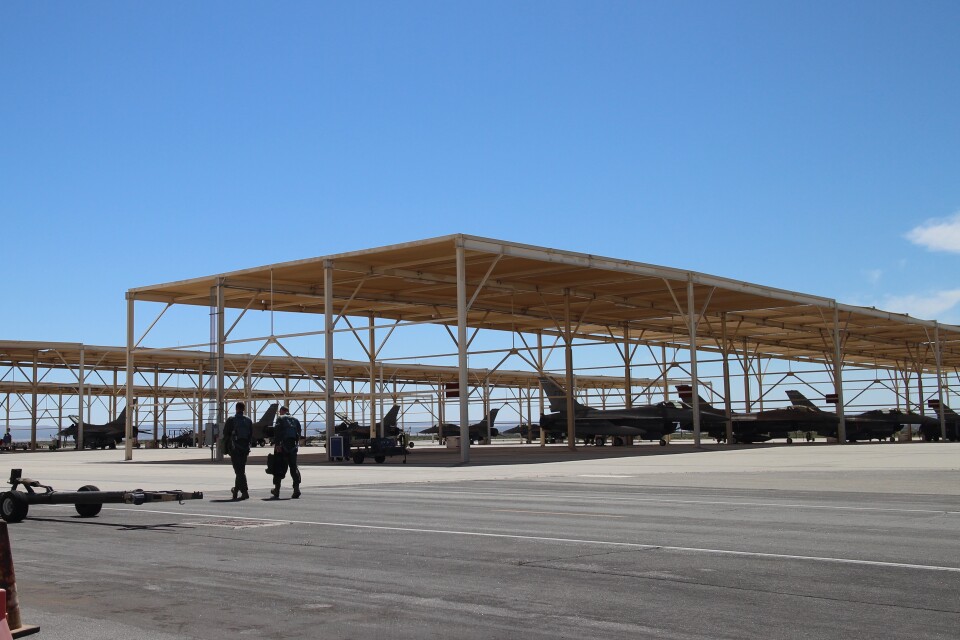
At the height of the space race, the path to NASA went straight through test pilot school. The 1979 book “The Right Stuff,” which was later made into a movie, follows the men who risked their lives as test pilots before becoming Mercury 7 astronauts.
With the space shuttle program ended, today’s students come in with strong expertise in a single aircraft and then learn to handle almost everything the Air Force uses, including unmanned aerial vehicles.
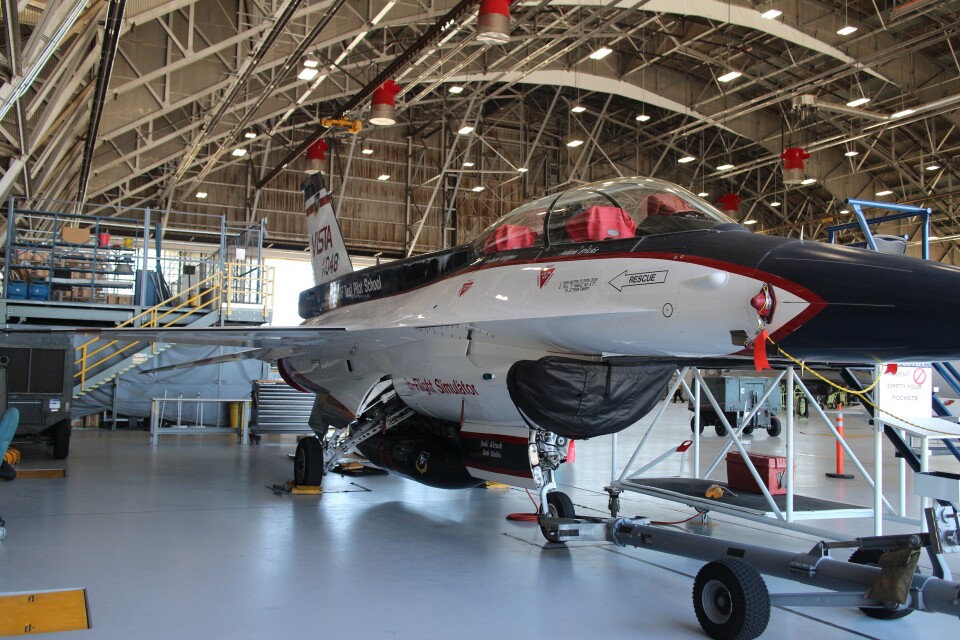
Students have access to an unusual aircraft – the Variable-stability In-flight Simulator Test Aircraft, known as VISTA (above) – which can simulate the flight characteristics of a range of fighter jets and bombers to give pilots practice.
"You develop some confidence and essentially become comfortable being uncomfortable," said commandant Webb.
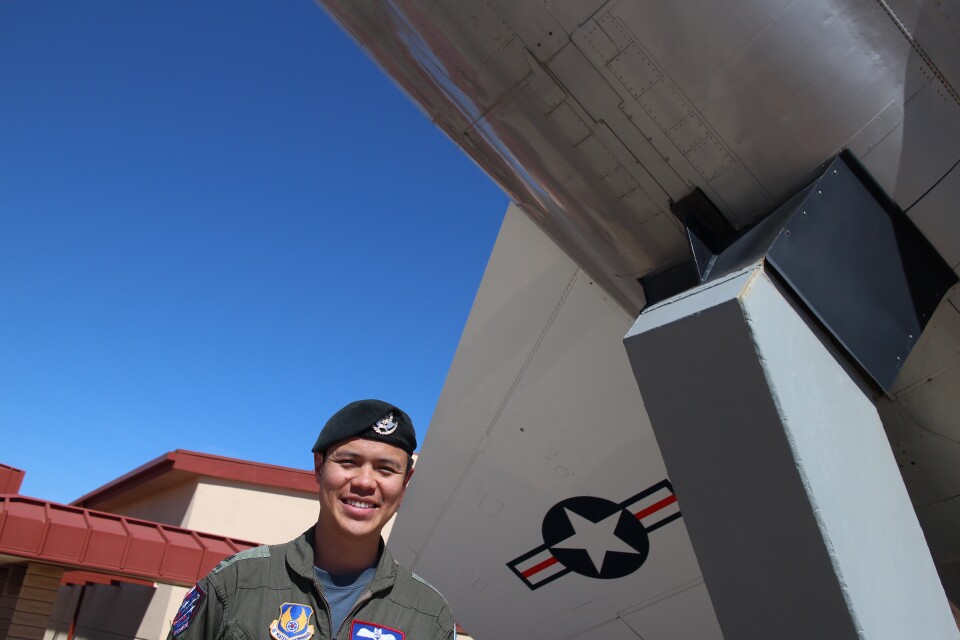
“This is really the cutting edge,” said Matthew Goh, who graduated from the school in June. “This is really the forefront of technology and having a huge say in it, that’s incredible.”
Goh is from Singapore — two spots in each class usually go to international students. After graduation, he’ll return to Singapore to work in flight test development.
For the most part, students at the school are overwhelming white and male. All applicants must have an undergraduate degree in engineering, and Colonel Webb says that requirement limits the pool.
Webb says getting kids more access to math and engineering in grade school is key to bringing more women and students of color to the school and creating a more diverse test pilot community.
For an audio journey into the school, click the blue player above.



